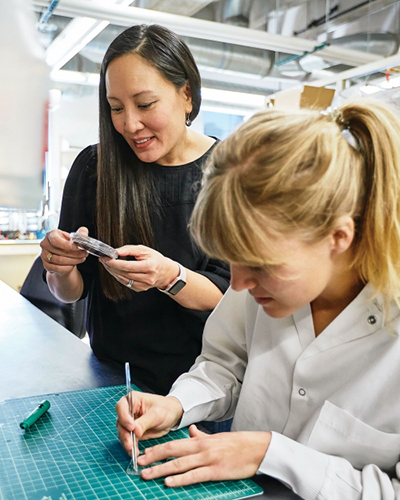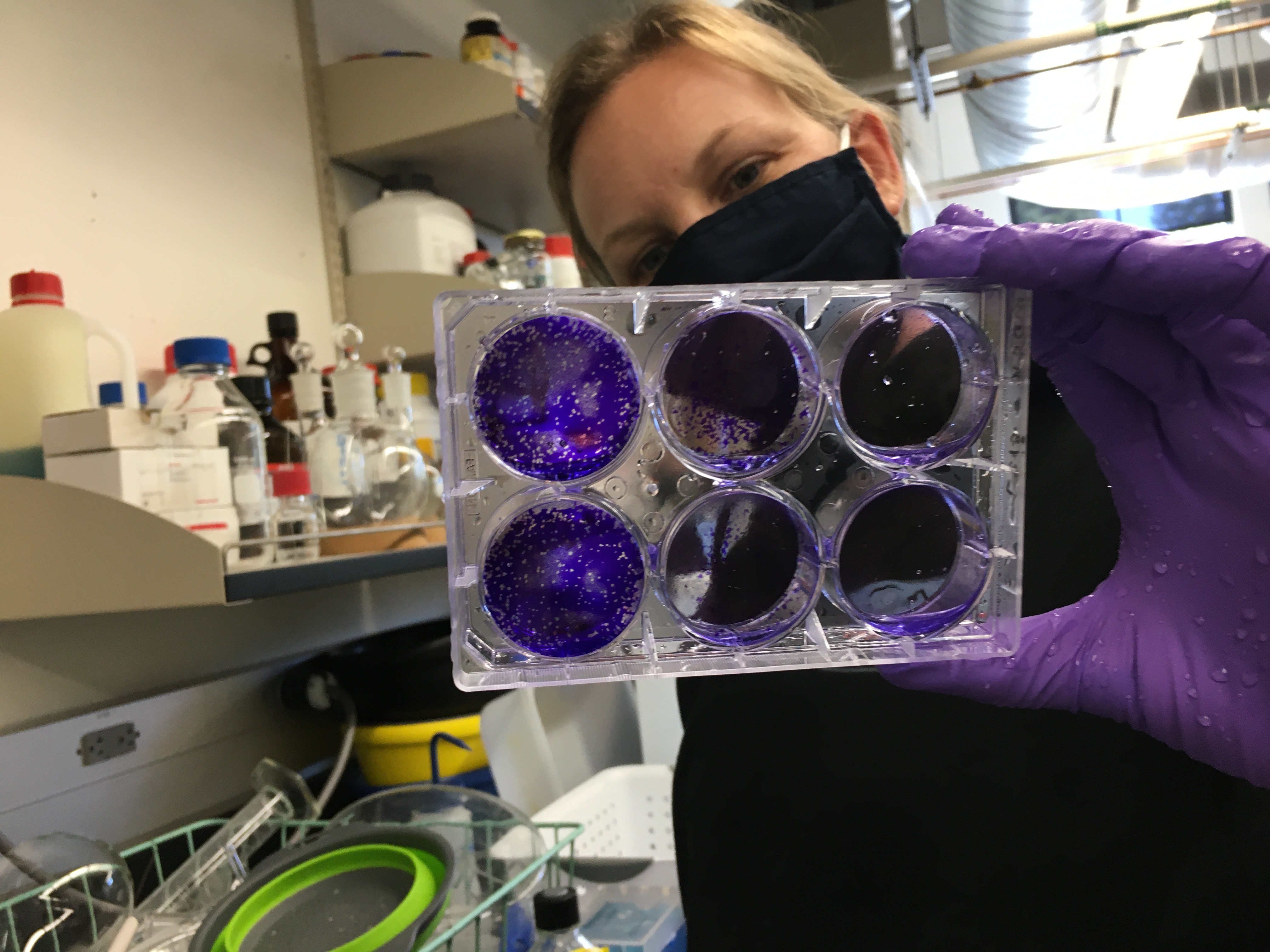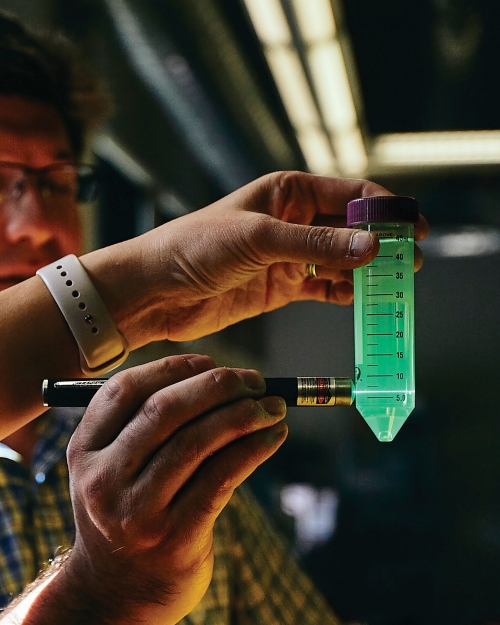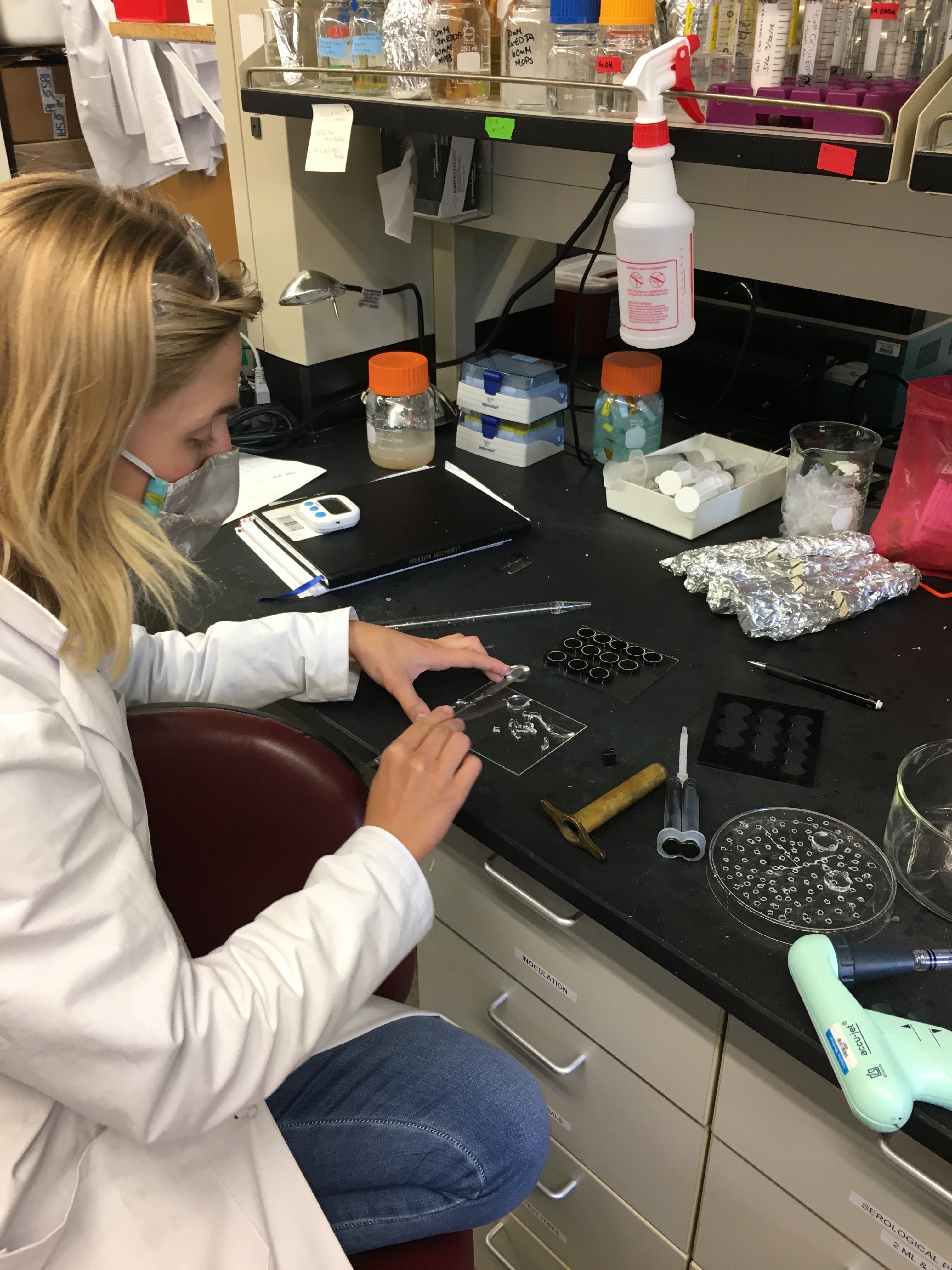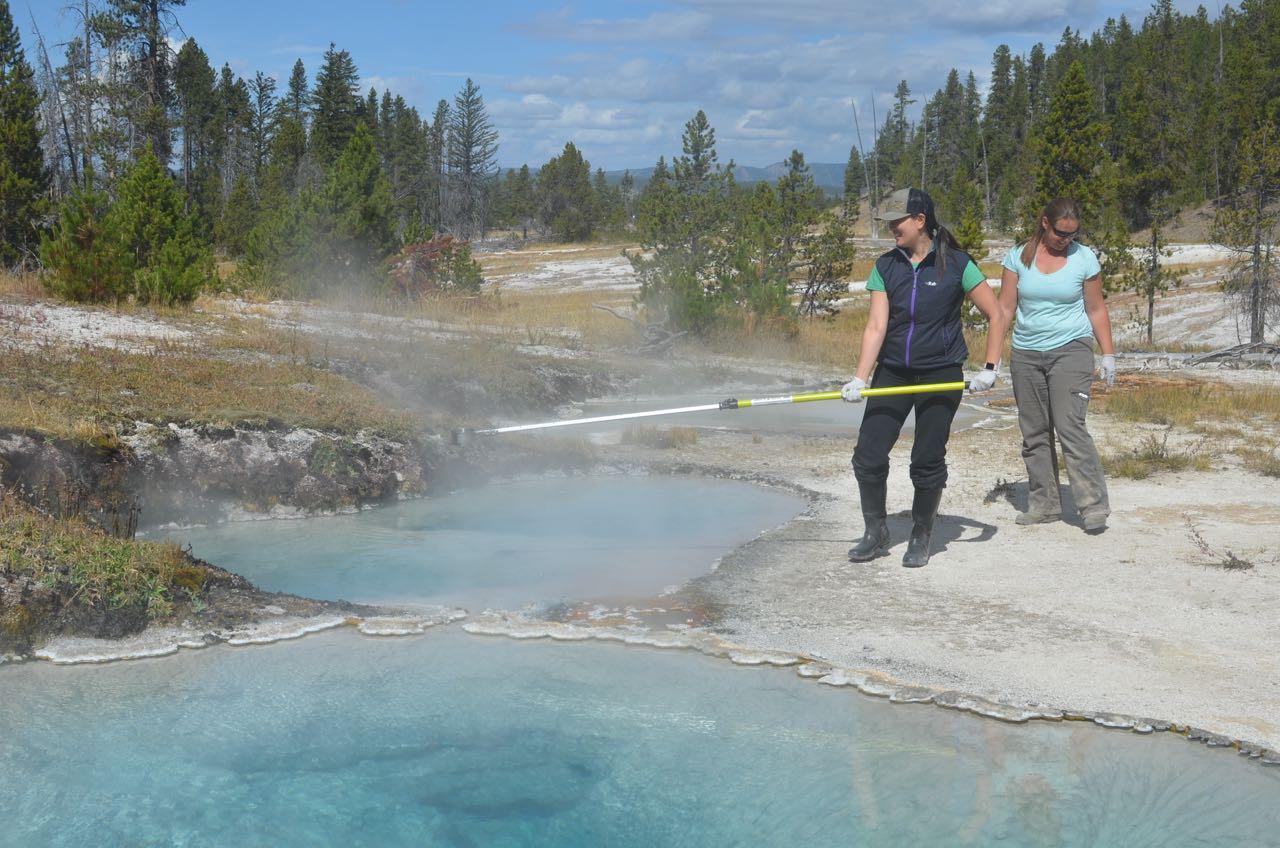Research
High-throughput screening and assaying of microorganisms at the single cell level
1.) High-throughput screening of biofilms. As biofilms cause billions of dollars of loss each year in medicine and in industry, applications that allow for a better understanding of biofilm formation and eradication can have a very large impact on cost control and improving health. We are developing methods for the growth of biofilm communities in droplets and microgels that will allow for high-throughput detection and sorting of biofilms.
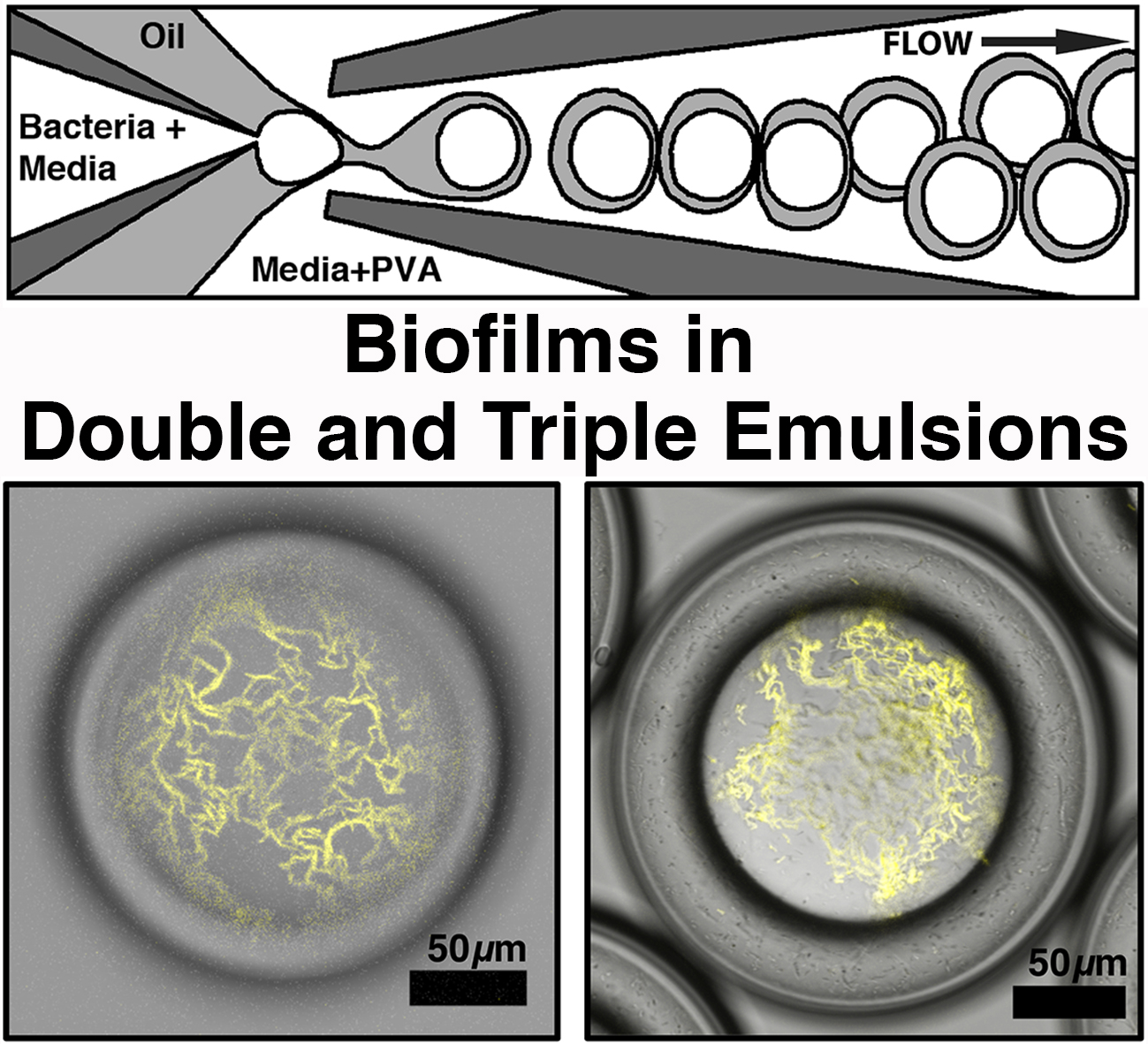
2.) Directed evolution. We have developed a novel microfluidic device, that allows for simultaneous passaging of millions of evolutionary bottlenecking events by splitting drops containing previous generations of viruses and merging with drops containing new host cells. Using this device and next-generation sequencing, we have discovered hundreds of new viruses that are able to escape a neutralizing antibody selection pressure. We are developing a drop barcode library that will uniquely label viral progeny in each drop to measure fitness of individual viruses. This work can be extended to study the evolution of other microorganisms.
Shown below is an image of viruses encapsulated with host murine macrophage cells in 100 μm drops of water-in-oil:

3.) Microorganism or cell discovery. Microfluidics can be used for the detection and isolation of rare microorganisms or single cells. Digital droplet-based PCR is a method by which drops are PCR-thermocycled with a fluorescent probe to amplify for contents of interest. Drops are detected and quantified as either bright or dark, and can then be sorted downstream. This is a powerful method for discovering new microorganisms, for the sequestration of rare microorganisms, or for the isolation of single cells that may have unique properties. One such example is the ability to isolate rare recombinant viruses formed from two different strains of viruses.
Related publications:
Rapid, targeted and culture-free viral infectivity assay in drop-based microfluidics, Y. Tao, A. Rotem, H. Zhang, C. B. Chang, A. Basu, A. O. Kolawole, S. Koehler, Y. Ren, J. S. Lin, J. M. Pipas, A. B. Feldman, C. Wobus, D. A. Weitz, Lab on a Chip, 10.1039/C5LC00556F (2015).
Artifact‐free Quantification and Sequencing of Rare Recombinant Viruses Using Drop‐based microfluidics, Y. Tao, A. Rotem, H. Zhang, S. K. Cockrell, S. Koehler, C. B. Chang, L. W. Ung, P. Cantalupo, Y. Ren, J. S. Lin, A. B. Feldman, C. E. Wobus, J. M. Pipas, D. Weitz, ChemBioChem, 10.1002/cbic.201500384 (2015).
Engineering new biomaterials
1.) We are interested in using drop-based microfluidics to create colloidal-templated biomaterials for applications ranging from drug delivery to novel methods of cell culturing. Examples
include stem-cell derived organoids growing in a hydrogel and screening of high lipid
containing algal cells for improved biofuel capabilities.
Organoid grown in Matrigel:
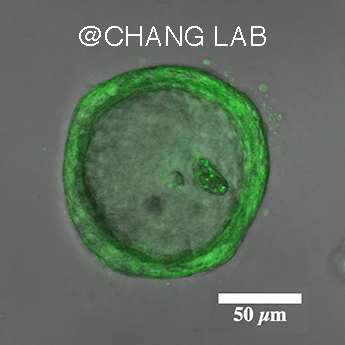
Algal cell in a 50 μm water-in-oil drop:
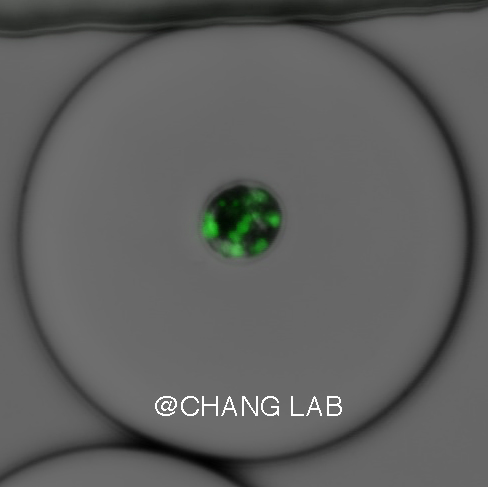
© Copyright Chang Lab. All rights reserved.

